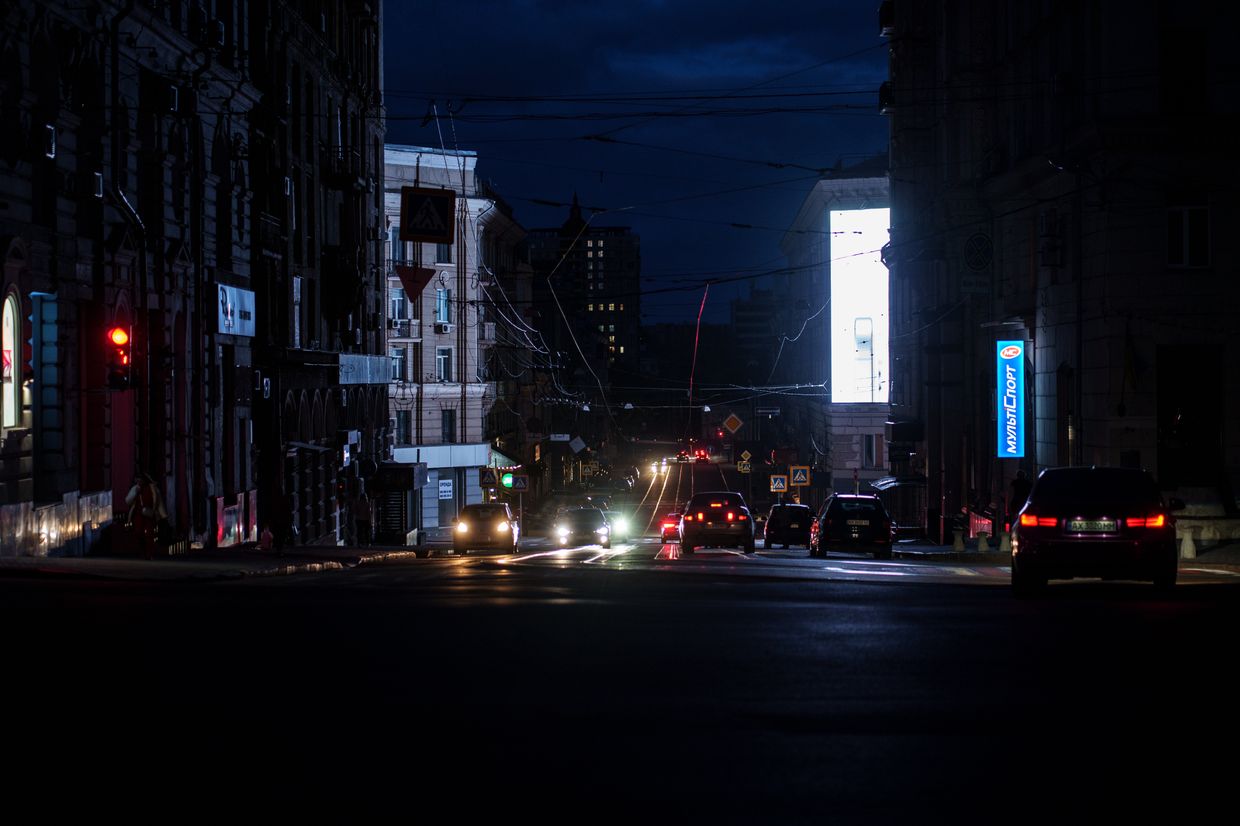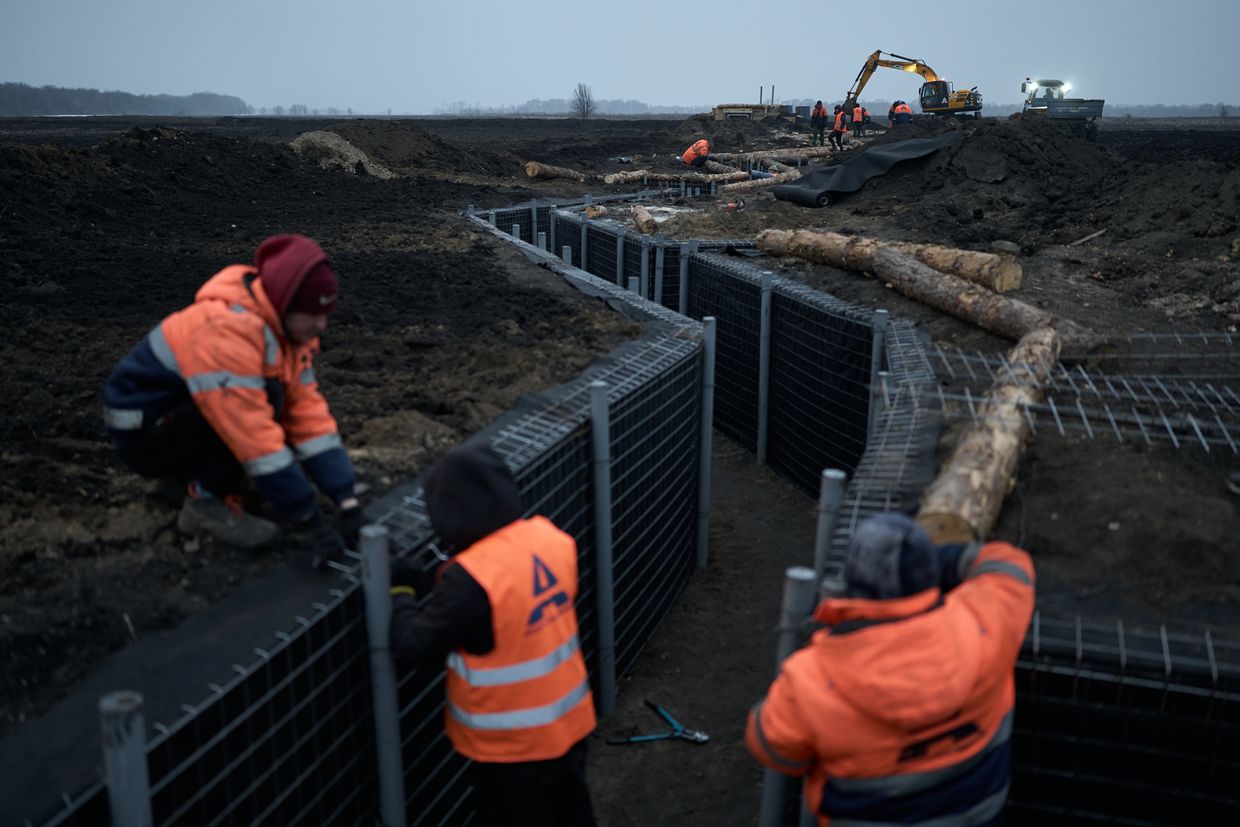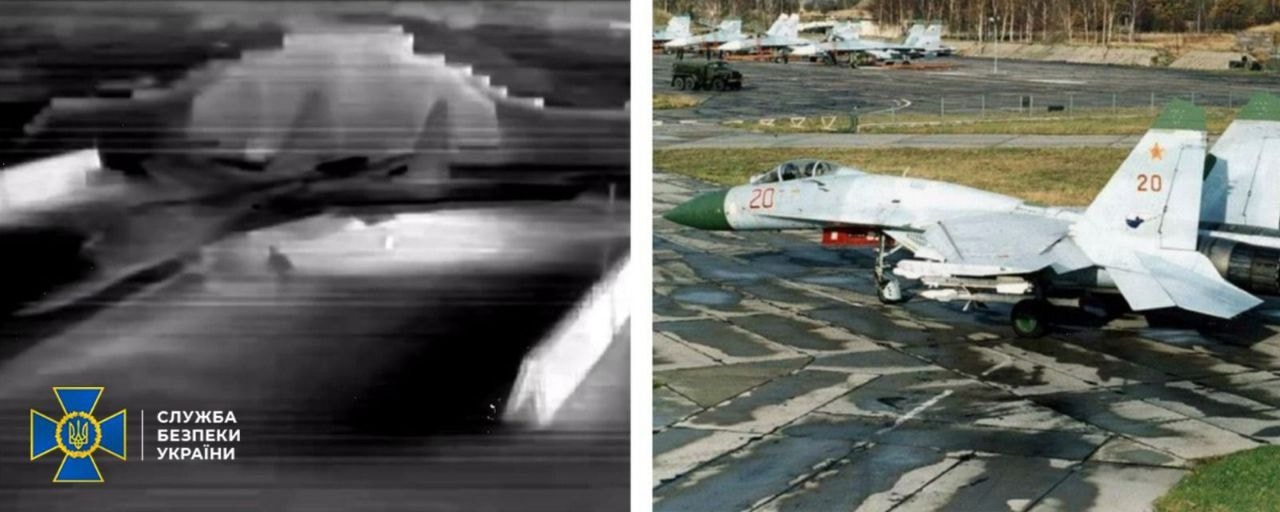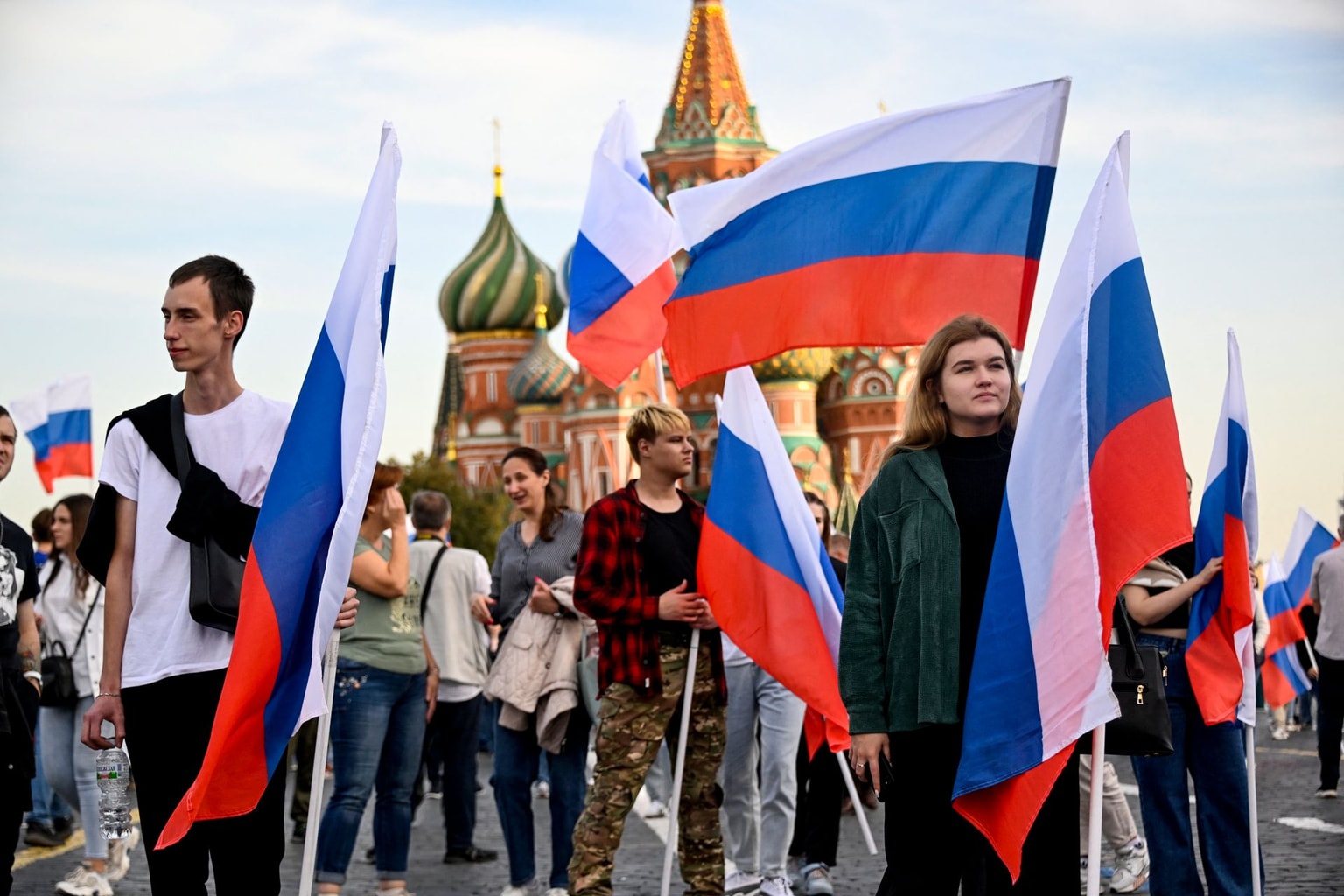
One night with Ukrainian drone hunters near Russia
Ukrainian military members of an air defense rapid response group track down Russian drones while on night duty in Kyiv Oblast, Ukraine on March 1, 2024. Members of the group protect the Ukrainian sky from the Russian ‘Shahed’ (or ‘Geran’) drones. (Zinchenko/Global Images Ukraine via Getty Images)
Editor’s note: Due to the security protocols of the Ukrainian military, soldiers featured in this story are identified solely by first names and call signs.
SUMY OBLAST – Soldiers from one of Ukraine’s 117th Territorial Defense Brigade mobile air defense squads call themselves fowlers.
The unit’s task is fending off Shahed kamikaze drones when Russia deploys these deadly birds to strike targets across the country, as well as watching the sky Ukraine shares with Russia over the border.
Their service is in constant demand: Russia deploys swarms of drones against Ukraine daily. When Shaheds breach Ukraine’s airspace in the north and head towards Sumy or Kyiv, the unit is the first to confront them.
Russia has launched almost 5,000 Iranian-developed loitering munitions since they were first shot down in Ukraine in mid-September 2022. The exact number of destroyed Shaheds remains unclear, but daily military reports suggest the majority have been intercepted.
Downing a $50,000 drone with Iris-T or NASAMS air defense systems worth $1 million each is considered profligacy. As Ukraine’s war-stricken economy is starved of expensive missiles, mobile fire units with heavy machine guns offer a cost-effective solution against Shaheds.
The Kyiv Independent embedded with the unit for a night shift of air defense duty in late March in northeastern Sumy Oblast near the border. Russia launched 60 drones along with dozens of cruise and ballistic missiles across Ukraine that night.
“Sumy Oblast is Ukraine’s northern shield. We are the last defensive line (in the region),” a soldier with the call sign Ranger told the Kyiv Independent.
‘Shahed danger’
Minutes after picking up the Kyiv Independent at a hotel in downtown Sumy around 10 p.m., the unit’s leader receives detailed intel that a group of Shaheds is approaching.
The squad leader, whose call sign is Dias — the modern Greek word for Zeus, the god of the sky and thunder — says a code meaning “Shahed danger” into a walkie-talkie and orders another soldier, call sign Ranger, to floor it.
The green pickup truck, mounted with an anti-aircraft gun, races toward a viewpoint where the unit can clearly see any incoming drones. Dias tells the Kyiv Independent to hold on tight as there is no seat belt in the back.
Dias is a tall sturdy man with blue eyes and a gray beard and is the sole squad member who had military experience before the start of the full-scale invasion.
He’s fought in several conflicts he was reluctant to name, only saying, “I neutralized my first (enemy) and safeguarded my unit in 1989.” A certified tactical shooting instructor in his civilian life, he has shared his knowledge with his subordinates in wartime.
“I taught them to shoot and survive,” he tells the Kyiv Independent when the truck stops in a field outside Sumy, the first viewpoint the unit went to that evening.
Besides Dias, the unit comprises 15 local civilians who joined the army in February 2022. They performed guerrilla warfare while Russian troops tried to encircle Sumy and advance towards Kyiv, and were later assigned to hunt drones.
Throughout Russia’s war, Moscow and Kyiv have heavily invested in drone technology, revolutionizing warfare. It’s the first mass-scale drone theater, with each side deploying tens of thousands of airborne vehicles for recon and targeted strikes.
Dias and his right-hand man, Ranger, join four other soldiers at the viewpoint. All six wear the same patch: Three Cossacks from a popular Ukrainian cartoon on an SUV fending off a missile with an iron shield.

Sounds of incoming artillery punctuate the clear and silent night as the soldiers stay glued to a map on a tablet running software that tracks Shaheds.
“Our sector is close to the border, within a range of artillery, guided bombs, and FPV (first-person-view) drones here. 300,000 people in (the city of) Sumy are behind us,” Dias said, adding they shot down their first two Shaheds here in July 2023.
Searching for Shaheds
After some time at the viewpoint, two soldiers, call signs Lynx and Scythian, get on to the back of the truck, which is mounted with loaded M2 Browning and KPVT heavy machine guns. A few minutes later, the air raid siren roars in the distance. The two watch the sky and prepare to shoot down any drones.
The U.S.-designed Browning, one of the oldest infantry weapons, is slightly older than the Soviet-made KPVT. Both boast a heritage spanning dozens of conflicts mostly after World War II.
“The browning is reliable, user-friendly and has a higher fire rate, and less dispersion. But metal is metal, its effectiveness relies on the soldiers’ skills,” said Dias.

Lynx and Scythian’s team leader within the squad, call sign Abdullah, carries a lightweight machine gun. A soldier, nicknamed due to his resemblance to a character from a Soviet Ostern movie, told the Kyiv Independent he welded extra foregrip for easier shooting while standing.
Several searchlights beamed the sky in the area, looking for Shaheds that can fly at a maximum speed of 115 miles per hour at an altitude of a mile. Everyone in this position seems to be in an adrenaline rush, anticipating a formidable fight.
“The precise shooting starts when Shaheds are 600 meters away,” said Dias.
The tracking system the unit uses along all the Ukrainian military shows kamikaze drones are moving. Yet Shaheds aren’t the only danger the unit foresees and every night there are reconnaissance drones in the sky as well.
Meanwhile, Ranger points a drone detector towards the sky, scanning for telltale signs in the electromagnetic waves. He checks for any Russian reconnaissance drones — the kind able to carry out recon, and guide and correct attacks.
How fast Ranger can detect them, determines whether the unit survives the barrage or first-person-view (FPV) drone attack. The electronic intelligence device can sense a drone radar or electromagnetic waves, providing early warning.

Ranger, named so as a tribute to his pre-war job protecting forests, could’ve avoided the draft as father of three. However, this tall man in his 30s joined the military, spending his free time studying drone detector manuals and mastering a first-person-view drone simulator.
“I’ll know if there’s an enemy drone and where it goes,” Ranger said, explaining the distinction between signals that can be wielded to overwhelm communication links and pinpoint targets.
Moving around
A few team members signal to the others when the tracking system shows Shaheds heading westward. Dias quickly analyzes their course and orders changing positions by calling out code names.
The placing of mobile air defense is crucial as Russian reconnaissance efforts strive to pinpoint fire teams and reroute Shaheds away. Another vital factor is ensuring the teams' positioning doesn’t create the risk of stray bullets hitting nearby villages when they're shooting down drones.
“There are sectors where shooting is strictly prohibited. Bullets would fall on people’s heads,” Dias said as a bevy of Shaheds appear and reappear on the tablet’s screen.
The tracking system offers a real-time map of friendly and hostile troops’ positions, aircraft, and drones movements, creating an experience reminiscent of a strategy game, albeit with real-life consequences.

“We know where Shaheds will emerge if the system doesn’t display them,” he said, referring to the importance of knowing the local terrain.
Ranger, who worked in the same area before the war, drives the truck through the narrow forest trail and alerts Dias to a motion detector spotted on a tree. After a short talk, both are very much in sync on moving towards another viewpoint, as they assume the device belongs to the Ukrainian military.
Precautions are a necessity in these dense forests near the Russian border, especially on a clear night like this. The borderland is filled with Russian saboteurs penetrating into Ukraine to expose Ukrainian observation posts, where they often skirmish with border guards and the military.
Dias asks the Kyiv Independent to wear an armored vest as we approach a spot on the edge of a forest and a meadow in the moonlight. He also requests speaking softly and remaining vigilant, listening intently to the sounds that could signal the presence of FPV drones or the footsteps of saboteurs.
While Ranger serves steaming cups of pu-erh, a Chinese fermented tea, the stillness is intermittently shattered by the whirring of drone propellers and the crunch of footsteps in the sparse undergrowth. Each time, Ranger, a seasoned expert on the local forest sounds, dismisses them as merely the rustle of a bird, the sway of a branch, or the whisper of the wind.

The Kyiv Independent shares two available cups for three people, taking sips in turns with Ranger while Dias carefully listens to the silence of woods and sky.
In the wee hours of the night, a tablet running Shahed tracking software shows kamikaze drones scattering west and east, distancing from the unit’s sector. Soon after, Russia deploys more drones from the south.
“One of the worst things about this job is waiting,” Dias says, interrupting himself as a signal for a cruise missile emerges on the tablet showing that it is flying just overhead. It wasn’t audible.
Lack of manpower
While reaching another viewpoint to join Dias' third team, another air defense unit from the same 117th Brigade takes up a position nearby.
"Closer proximity means denser firepower," Dias said when asked about the distance between teams.
Achieving high fire density has proven challenging due to shortages in the manpower, weaponry, and transportation supplies needed for better interception rates.
Proper rest after drone hunting also remains elusive. While each team works in 24-hour rotations, everyone rushes to provide reinforcement when air raid alarms go off, which sometimes happens several times a day.
“The day melts into the night. You try to sleep, but constantly wait for the signal,” one soldier said, while others said they sleep with walkie-talkies and phones.
The government delivers enough basic supplies: uniforms and food. Yet, soldiers and volunteers have to crowdfund albeit old, but necessary trucks, vision, and detection gear.
“The mission's success depends on reaction and vital advanced tech. The world advances, and we need to advance along with it,” call sign Athene, a team member within the squad, told the Kyiv Independent.

Although the soldiers praise their aging machine guns, their aspirations lean towards still old but younger weaponry. The squad leader enthusiastically lists the German-developed MG3 and Belgian-designed M240 machine guns, and the U.S.-made M6 Vulcan six-barrel rotary cannon and emphasizes the importance of shooting drills.
“We're eager to take down Shaheds. We could cut them with such weapons,” Dias said, adding his unit downed a total of six Shaheds and a dozen reconnaissance aircraft.
He described downing Russian drones as “pure euphoria.”
As dawn breaks, the Shahed danger has lifted. There were no casualties nor destruction in Sumy that night. Dias and the others exhale with relief.
Yet a hint of disappointment colors their emotions. They know they missed out on aerial combat.
“We geared up for battle, yet the Shaheds evaded us today, leaving a physical and moral strain in their wake. Despite working tirelessly through the night, there's no satisfaction,” Dias says at a gas station as he and the soldiers drink complimentary cups of coffee for their service, lightening their mood a bit.













